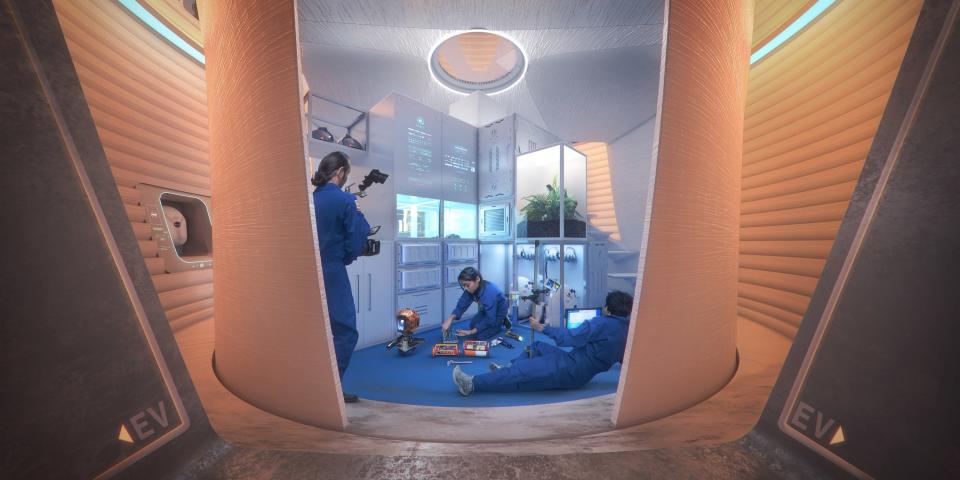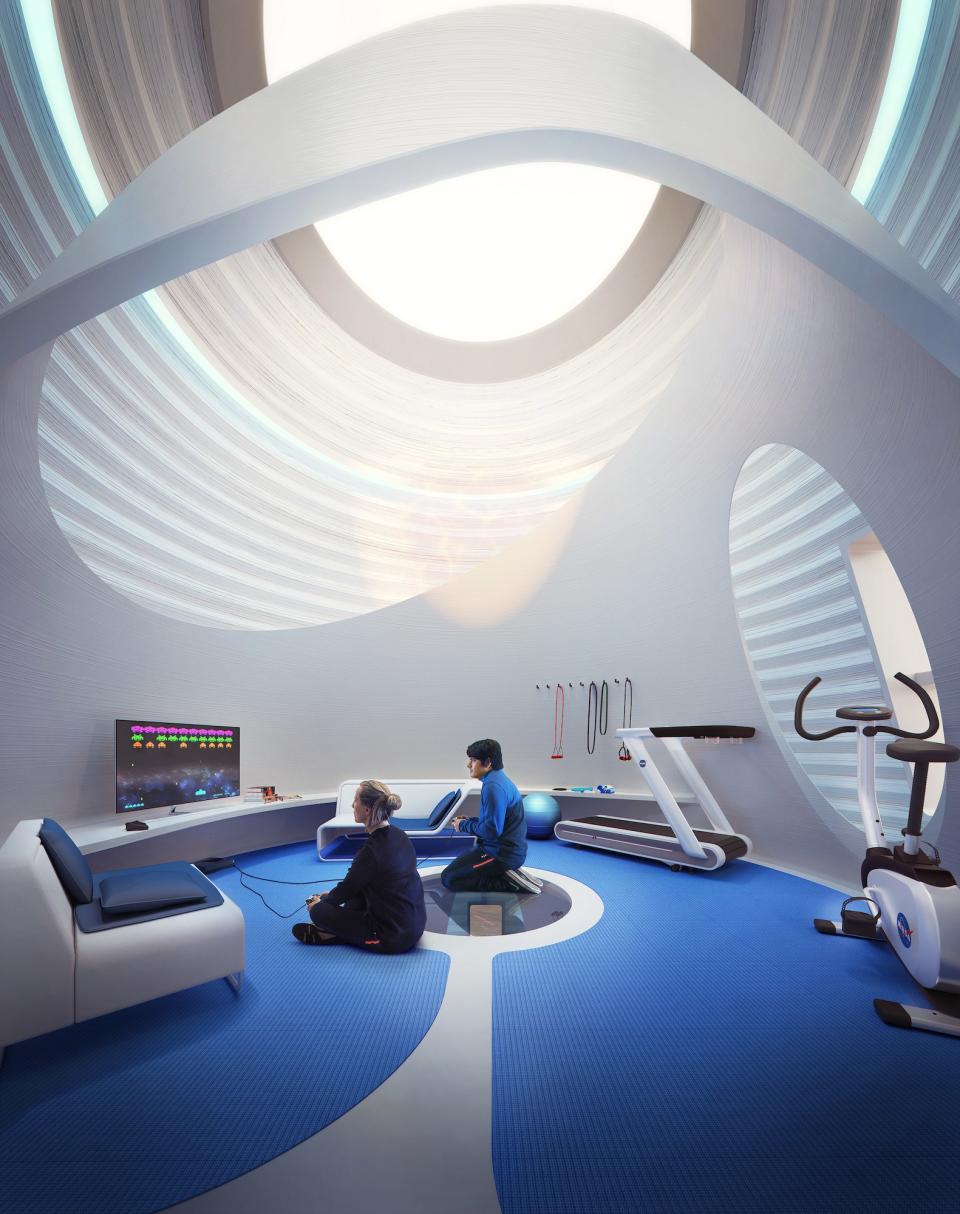These Award-Winning 3D-Printed Models Show How We Could Live on Mars
On Saturday afternoon, May 4, design and engineering teams from AI SpaceFactory, an architectural and technology design agency in New York, and Pennsylvania State University faced off in the final level of NASA's 3D-Printed Habitat Challenge, which was run jointly with Bradley University in Peoria, Illinois. The competition, which was initiated in 2015, challenged teams to imagine and create sustainable shelters that could one day be built on the moon or Mars using locally available resources. The three-phase challenge tested teams across areas of 3D printing, including modeling software, material development, and construction.
From May 1 to 4, the two teams—whittled down from a group of 60—went head to head in 30 hours of 3D printing at a Caterpillar facility in Edwards, Illinois. Creating one-third-scale shelters of their architectural designs, the teams used recyclables and materials that could potentially be found in deep-space destinations. AI SpaceFactory built an elliptical pod using polylactic acid (PLA), a thermoplastic derived from biomass (theoretically to be processed, eventually, from plants grown on Mars) and one of the most common materials used in 3D printing. Penn State used concrete to create a structure with two domes.
Once the printing process was complete, the structures were subjected to tests that measured their ability to hold an atmosphere, tolerance to withstand meteor impact, and overall strength. Teams were scored on material makeup, design, structural integrity, and performance.

In the end, AI SpaceFactory took top honors and a prize purse of $500,000. Penn State went home with $200,000. And while neither design is quite ready to be launched into space just yet, the boundaries broken here were remarkable. Few people worldwide are building with this emerging technology at this scale.
“This is a chance to be involved with and help accelerate literally a disruption of the construction business,” says Lex Akers, dean of Bradley University's Caterpillar College of Engineering and Technology. “This is innovative. It could change the way we build buildings worldwide as well as planet-wide.”

In space, such technologies will enable more sustainable and autonomous exploration missions. But additive manufacturing—a term that covers a spectrum of technologies that build 3D objects by adding layer upon layer of material—have applications here on Earth, too. These capabilities could be used to construct housing affordably, quickly, and with indigenous materials.
“I see its immediate use in places that have hurricanes, tornadoes, earthquakes,” says Akers. “Very rapidly—in 24 hours, 48 hours—you have a stable home people can live in.” Akers notes that 3D-printed structures could also be an affordable solution as various regions see rapid population growth. “These machines can do it fast, cheap, and very, very safe.”

